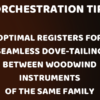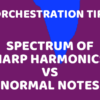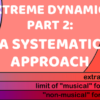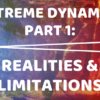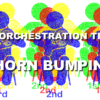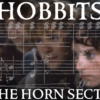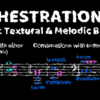 Friday, 3 January 2013 – Collingwood, New Zealand
Friday, 3 January 2013 – Collingwood, New Zealand
Day 1 of work on the Mission Estate orchestration job. It’s good to be back to it again, though the circumstances are a little strange. It’s 4:50pm as I start this journal entry, leaning back from my little workdesk in a little cabin on the South Island coast.
I’ve been waiting to start work on this commission for a whole month, pretty much since the end of my last big job, scripting and presenting my Radio New Zealand Concert-FM composer film series. All through various December trips, holidays, and time off, I’ve kept my startup energy on standby. Finally, yesterday before leaving on a trip to the South Island, I sent a prompting e-mail to the Music Director and to the artist’s management, noting the limited time left before the concert in 6 weeks, and the probability that parts and score would be needed even sooner, like 4 weeks.
The main delay that I heard last month was that the artists were taking their time on confirming their song lists. So in yesterday’s e-mail I pointed out that certain songs were already listed on various internet promotions for the concert, and told them I was ready to roll on any song that was confirmed. Then I shut my laptop, got in my car, and drove to the ferryboat in time for the morning crossing of the Cook Strait.
After hours on the boat, then even more on the road, I finally ended up at a motor camp in Collingwood, just a little south of Farewell Spit at the northernmost tip of the South Island. Oddly, this location is north of Wellington, as the two capes overlap each other latitudinally by a few dozen miles. After checking in, eating dinner, unpacking, and thinking vacationy thoughts, I opened my e-mail, and thanks to the rather sluggish but serviceable wifi out here, I received three e-mails from the MD and one from management. The gist of them all was: start now, here are three confirmed songs, how many can you do, and these are the confirmed orchestra numbers.
My reply as of last night was: I’m starting immediately, thanks for giving me the overture, I can do as many as ten in a month (more with some flexibility), and give me the details on orchestra miking and house band numbers.
So this morning I tore into it. In a situation like this, I generally listen to the songs a few times, and get a copy for my iTunes. In the case of the first three songs, there were many versions of each, both live and studio cuts, many of them on YouTube (ah! thanks to the gods of Google!). The first thing I did was to settle on the Exorcist soundtrack single version of Tubular Bells, the concert’s overture. This cuts the 45-minute opus down to the intro through to the troglodytean stomping parallel chord melody, then a taste of the intro again – around 3 and a half minutes. Most of the audience will have heard this version, and will recognize it at the very least, even if they never got around to listening to the rest.

There was a bit of confusion at first as I watched a clip of a conductor beating time to his version of TB for orchestra. He seemed to be dividing the beat along the stress points of the opening piano figures. This is complicated by the fact that it’s a repeating pattern of 30 notes, with divisions of 7+7+7+9. After some thought and consultation with an orchestra player friend about how they’d want to be conducted, I settled for a rather simple solution: 1 bar of 4/4, 1 bar of 3/4, 2 bars of 4/4. This would put the burden of finessing the offbeats onto the players handling the patterns, but it would firmly delineate the pulse for the bass and rhythm players. The players in this orchestra have done far more complex pieces like Rite of Spring – they’ll be able to handle this.
The second thing I do is to notate the basics of the band parts in a crossover score. For Tubular Bells, this was very exciting, though I already know the music quite well. Listening to it and really pulling its structure apart with my ear and turning it into bars and staves brought home how its composer Mike Oldfield was an orchestrator in his own right, using electroacoustic instruments, effects, and mixing as his colors, and multitrack recording as his staff paper. All the same, the music is structurally very simple, if ingeniously quirky in places.
All the while I was scoring this out, the weather was simply going nuts outside my little cabin. I had to shut the window to keep the sideways rain from blowing all over my pocket studio (laptop, headphones, and mini-keys). Later on I heard that flights were canceled, seas were raging, and trees blown over between here and Wellington. I guess I lucked out with yesterday’s fair crossing and pleasant skies. By this time, though, the clouds are breaking up and the wind is slacking a little.
I should mention our artists, the five vocalists who are flying all the way down to New Zealand to perform at the Mission Estate Winery. They are a stylistically mixed lineup of pop artists, some from the 70’s-80’s, like Leo Sayer and Billy Ocean; and some much more recent: Mel C (she of Spice Girls fame), Sharon Corr, and Ronan Keating. Confession up front: I’m not a huge pop music fan, being raised on roots rock, classics, jazz, and the blues. But this funny survival trait kicks in whenever I’m commissioned to a job: no matter how much I’ve disliked or avoided a song or style in the past, I still seem to understand it, empathize with it, and see all the options for expanding it orchestrally when I’m commission to arrange it. I totally get it in a way that I normally wouldn’t.
For this job, I was the original consultant on which repertoire we’d ask the artists to perform. I listened to over 200 songs, and made a list of what would work very well orchestrally, what could be made to work with some effort, and what simply wouldn’t sound very good. It was actually a very cool process. Some songs I could tell right away were no good (at least for crossover orchestration), as the setting was intended to push the voice into a more artificial direction. Other songs had lots of room for orchestration, and there were even a few that had huge potential for expansion. I hope the artists will take the advice I passed along, because there are some real gems waiting to be polished and set, making them really shine at show time.
I had time to give another song the same preliminary treatment as Tubular Bells: “When You Say Nothing At All,” by Ronan Keating. This was used in the Notting Hill soundtrack, and shows a lot of country pop influence. Though it’s mostly I-V-IV-V, it’s still got some interesting touches. Until the tonality firmly establishes itself, the song feels like its starts with a classical period 3rd beat stress, making the listener think that the downbeat is a half-bar pickup. There’s a modulation from G to E for the break and then back again, and it works pretty well without feeling shopworn. There’s also a nice drop in the energy halfway through the third chorus.
Here’s a bit of advice for the crossover arranger: listen to the live version! First, it shows you much better than the studio cut how an artist likes to perform a song. You can hear where their voice isn’t as strong during a long show, how they like to vamp, and any changes they’ve made on tour. Most important, it shows you how the band finishes a song when the studio cut fades out. That’s another way that YouTube has really saved my bacon in the past few years.
In the case of the Keating song, I was able to hear how he added a vamp to the end that brought the song to a definitive close. This was from a live version with orchestra, which was a very tame, backgroundy arrangement. I’m practically jumping out of my seat after hearing it, because I know I will do a better arrangement than that, one that will make that singer soar. I can’t wait to release the hounds on that one.
Tomorrow: more work on Tubular Bells.


